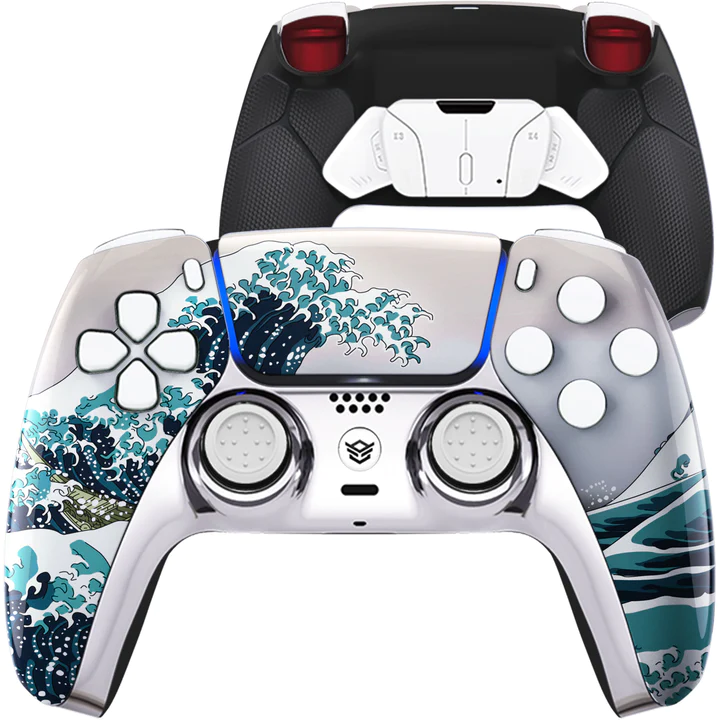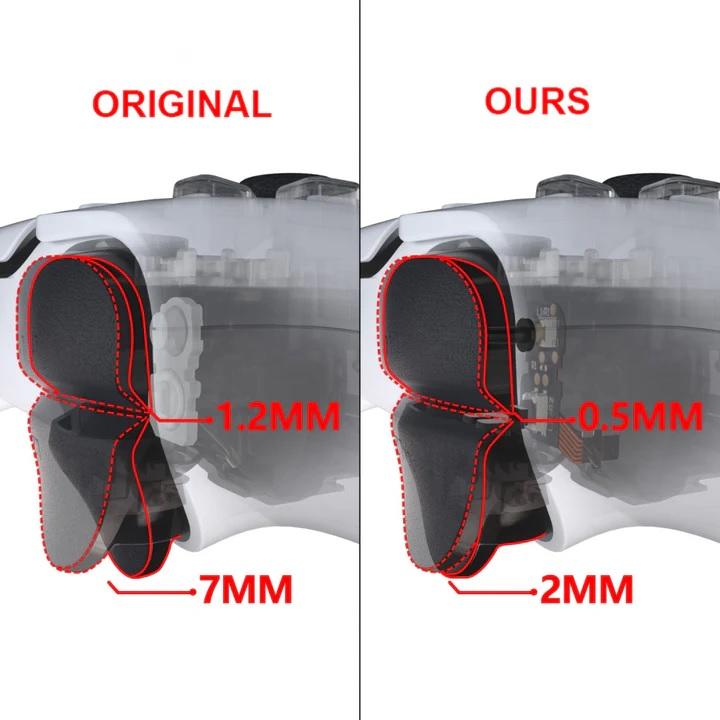At face value, HexGaming’s Rival Pro for the PlayStation 5 boasts all of the features that’d make it an instant competitor among other options marketed as high-performance, esports-ready controllers. It supports both wireless and wired connections on the PlayStation 5 and PC, has interchangeable thumbsticks to suit different preferences and genres, and most importantly, includes remappable buttons on the back of the controller. That base version goes for $199.99, but if you opt for the more expensive option at $289.99, you’ll get “FlashShot” hair triggers on all four shoulder buttons as well as a rubberized grip (for the purposes of this review, we tried out the model that included the FlashShot upgrade and rubberized grips).
Videos by ComicBook.com
And, for the most part, all of those functions perform just as one would hope. The interchangeable thumbsticks, however expected a feature they may be by now, are one of the best parts of the controller. Two sets of thumbsticks allow for both long and short concave and convex options to satisfy different needs depending on what you’re playing. You can pop them out with ease without having to take apart other parts of the controller, and they glide around effortlessly to the point that you won’t even realize they were a talking point at all which feels like about as much as you can ask for when it comes to seamless features.
The triggers, however, were a bit less impressive. These hair triggers available in the FlashShot upgrade greatly reduce the distance the shoulder buttons have to be depressed for their inputs to register which is a huge boon in FPS games and related genres. However, that shorter travel distance means there’s less room for error when it comes to releasing them as well. On multiple occasions playing games where you have to aim down the sights of a weapon with L2, I found myself accidently letting off the button too much to the point that the aiming stopped even though I’d only made a slight adjustment to get a better grip. This didn’t happen as frequently as I got more comfortable with the controller, but it never really stopped happening entirely which is an issue I hadn’t faced with other premium controllers in the past. Given the shape of the L1 and L2 buttons, the FlashShot feature was hardly noticeable on them.

Continuing on the topic of comfort, there are a few differences between the body of this controller and a DualSense to be aware of. While its shape looks almost indistinguishable from the DualSense, there’s certainly a difference to be felt along the arms of the controller following the path of your index fingers. It feels as though it’s a bit taller in that area which means more of a stretch to get fixated on the shoulder buttons. Again, this is something that you mostly become accustomed to over time, but just like you may find yourself making constant small comfort adjustments if you move from DualSense to an Xbox controller, you’ll have to get comfortable with the Rival Pro in the same manner.
With controllers like these that offer remappable buttons on the back paddles, two questions always come to mind first: how easy is it to remap the inputs, and how comfortable are they to reach and use? In both cases, the Rival Pro performs as well as one would hope. Remapping an input to one of the four back buttons requires only a few holds and presses, and the second you grip the controller, you’ll land right where you should on the extra buttons. The plastic used in their design makes them quite clicky and noisy as if you were using a mechanical keyboard, but it’s a nonissue if you’re using a headset.

The appearance of the controller is the aspect I was least concerned with given that I’m hardly ever looking at the device itself, but the Rival Pro pictured above that I reviewed as agreeable enough. Looking at the other options available on the HexGaming site, there’s bound to be some design there that’d work for just about anyone. It was a bit disappointing, however, to see that there were already minor chips or blemishes in the controller’s paintjob. These were mostly noticeable right where the design ended on different components like the very edge of the touchpad, but inspecting those revealed that the pause button was loose in its socket already. If someone were to drop around $300 on a new controller, those aren’t things they’d want to see right out of the box.
HexGaming’s Rival Pro is certainly more useful than a regular DualSense given its extra inputs that are difficult to abandon once you’re used to them, but when you tally up its shortcomings and missing features like the lack of removable components beyond the thumbsticks, it’s a tough sell compared to what it’s up against (especially with the DualSense Edge on the horizon). The cheaper Rival Pro without the rubberized grips and FlashShot triggers is more agreeable, but again, if you can find that and more elsewhere for around the same price, it’s difficult to recommend the Rival Pro unless you’re just ready to ditch the DualSense as quickly as possible.
A HexGaming Rival Pro PlayStation 5 controller was provided by HexGaming for this review.








